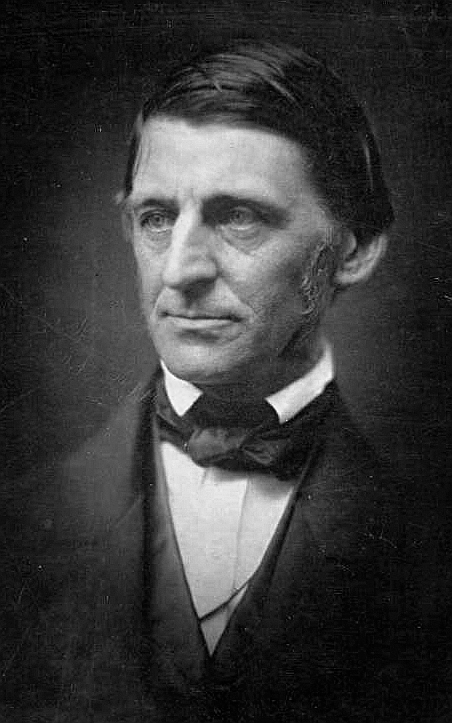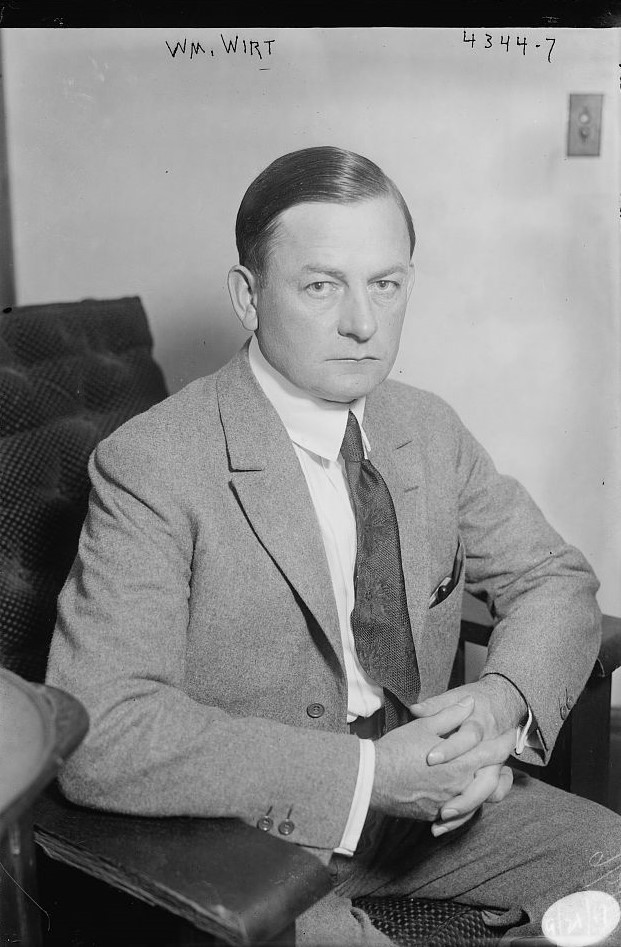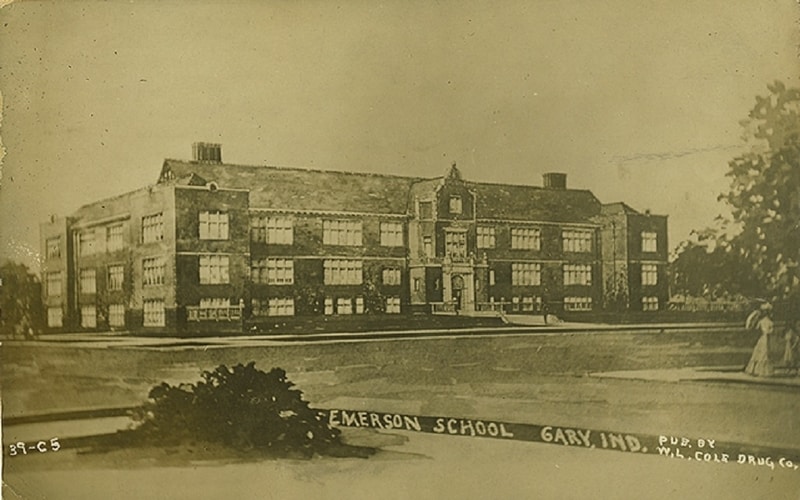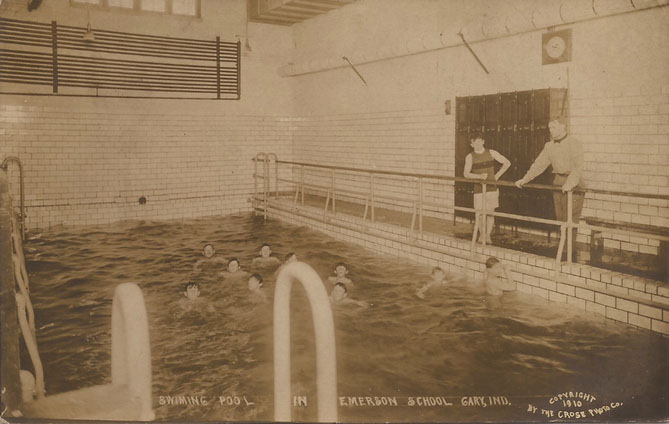| City/Town: • Gary |
| Location Class: • Schools / Educational |
| Built: • 1909 | Abandoned: • 2008 |
| Historic Designation: • National Register of Historic Places (1995) |
| Status: • Abandoned |
| Photojournalist: • David Bulit |
Table of Contents
Emerson High School
Bearing the name of transcendentalist writer, lecturer, and philosopher Ralph Waldo Emerson, Emerson High School was Gary’s first high school and the first public school in the city to implement Gary School Superintendent William Albert Wirt’s new Work-Study-Play system of education known as the Gary Plan. Wirt developed a “Whole Child” philosophy while assuming the post of school superintendent in the city of Bluffton, Indiana, in 1899.
He believed rapid urbanization in the early 20th century threatened the rural values necessary for a child’s total development: family, work, and productivity. When Wirt became superintendent of schools in Gary in 1907, he began implementing his values into the school system by initiating teacher hiring standards, lengthening the school day, and designing schools to meet his standards.
Built in 1909, Ralph Waldo Emerson High School was designed by St. Louis architect William Butts Ittner who specialized in designing schools. Within the next few decades, Ittner would design four more schools in Gary: Horace Mann School, Froebel School, Theodore Roosevelt School, and Lew Wallace School.
Emerson included no less than what Wirt required to implement his new system: thirty classrooms, seven laboratories, art studios, band and orchestra rooms, and rooms for industrial and household arts. The school also boasted an auditorium, a gymnasium with an upstairs running track, the first high school to have an indoor swimming pool, and even a student-run bank and zoo.
William Albert Wirt, Educator
William Albert Wirt was born on June 14, 1874, in Markle, Indiana, to Emanuel Wirt and Mary Ann Elick. Wirt graduated from DePauw University in Greencastle, Indiana, in 1898 and completed one year of graduate work. While still in school, Wirt oversaw schools in the small town of Redkey, Indiana, and became the school superintendent in Bluffton, Indiana, after graduating. In 1907, he was appointed superintendent of schools in Gary, Indiana, founded just the previous year. It was here that Wirt gained national attention for his progressive educational policies.
He served as mayor of Gary from 1925 to 1930, where he continued to advocate for progressive policies to improve the lives of the city’s residents. His greatest accomplishment became known as the Gary Plan, and concepts of this system are still used worldwide.
The Gary Plan
One of Wirt’s most notable achievements was implementing the “Gary Plan” in 1910. Often referred to as the “platoon system,” students were split into two platoons, the first utilizing the school’s academic facilities while the second platoon utilized non-academic facilities such as the gym and swimming pool. Students’ constant movement and rotation would efficiently keep all facilities in use at all times, thus reducing costs. Under the new system, school officials could schedule a student twice as large as before into the same space by rotating students between specialized teachers who would teach a specific subject on a precise schedule.
The system was revolutionary then, but it wasn’t without opposition. In 1914, students and parents rebelled against implementing the Gary Plan into the New York City public school system. For the next three years, the Gary school system faced resistance from parents, students, and labor leaders concerned that the plan trained children to work in factories and that it was implemented in predominantly Jewish areas.
In January 1916, the Board of Education reported that students attending Gary Plan schools performed worse than “non-Garyuzed schools.” Despite the opposition, schools worldwide still employ concepts from Wirt’s original system, such as the multi-period high-school schedule, vocational-career education programs, and arts curriculum offerings in the United States today.
In addition to these criticisms, Wirt opposed Franklin D. Roosevelt’s New Deal because he believed it would suppress American individualism. He disseminated his views through pamphlets, articles, and speeches, particularly those that addressed economic issues such as currency manipulation to alleviate the economic downturn. One of his pamphlets was titled “America Must Lose by a “Planned Economy,” the Stepping-Stone to a Regimented State.” This publication resulted in a libel lawsuit. He also accused the New Deal of being a communist plot to destabilize the American system.
The first three projects of the Works Progress Administration (WPA) in Indiana were in Lake County and Marion County. Gary workers were tasked with improving city parks, such as Gleason Park and Lincoln Park, by building roads, golf courses, and buildings like the North Gleason Park Pavilion, which contained locker rooms, a dance hall, a lunchroom, and a lounge.
Racial Tensions at Emerson
Emerson High School was originally an all-white school, but due to overcrowding in the 1920s, black students attended white schools for the first time. To alleviate overcrowding, Wirt approved the transfer of black students to Emerson; six black students attended Emerson in 1926, and another eighteen followed in 1927. The white community did not stand for it, with the white student body staging a walkout, which eventually culminated in a strike. Over 1,300 protestors, students, and parents stood outside Emerson, refusing to go back inside or disperse until the black students were transferred out.
Wirt decided to establish a new school for black students, Theodore Roosevelt High School, and transferred the students out of Emerson. The issue of desegregation returned in 1945 when hundreds of white students walked out of the newly integrated Froebel School, prompting a visit by Frank Sinatra to help ease tensions, speaking at the Gary Memorial Auditorium about equality and acceptance. In 1946, the Gary school board adopted a desegregation policy, but discrimination continued as Emerson’s white student body staged a second walkout in protest. It wasn’t until 1949 that Indiana state law desegregated public schools.
Emerson School for Visual and Performing Arts
Due to a shrinking enrollment caused by the city’s decline, Emerson closed as a high school in 1981 and reopened as a magnet school. The school lacked identity as the community referred to the school as Emerson VPA, Emerson High School, Gary High School, Gary-Emerson School, and the Gary School until 1987 when the name was officially changed to Emerson School for the Visual and Performing Arts. The school was renovated in 1998, including a computer lab, new stage drapery, and rigging. The indoor swimming pool was filled in and replaced with a shower and dressing room.
Deterioration of the historic Emerson High School
By 2007, Emerson had deteriorated to the point that it was negatively affecting the health of the students, and it was soon discovered that mold was the culprit. Old plumbing had sprung leaks within the school’s ceilings and walls. In March 2008, a major clean-up effort was underway: drywall and ceiling tiles were replaced, leaky pipes were repaired, new carpeting was laid out, and the building received a new coat of paint.
The following month, an early evaluation of the school’s air quality brought positive news, and the school boards announced the cleanup was a success. A more thorough evaluation was later conducted, and it was found that the mold was still present and much more severe than previously thought. With no funds left, the school board closed Emerson after serving the community for 99 years.
The building was listed on the National Register of Historic Places in 1995, but despite its status and history, it has remained vacant since its closure. Over the years, the building has been heavily vandalized while many other schools in the city would close due to academic failures and massive debt incurred by the Gary Community School District. The Emerson High School made national headlines in 2015 when a 17-year-old girl was found strangled to death in the building, spotlighting the immense blight and crime the city faces. As many would put it, Gary was a dying city.

Photo Gallery
If you wish to support our current and future work, please consider making a donation or purchasing one of our many books. Any and all donations are appreciated.
Donate to our cause Check out our books!





























[…] the success of Gary School Superintendent William Wirt’s Gary Plan at Emerson High School, Wirt drew up plans to establish four schools over the next two […]